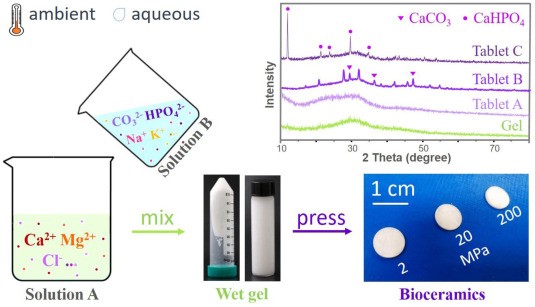
Ceramics are key components of life, forming elaborate and diverse structures found in coccolith, shells, skeletons, and teeth. In materials research, however, one generally finds ceramics difficult to process because of their high hardness and melting points. How organisms effortlessly build stunning ceramic architectures, in water and at mild temperature, remains a long-standing mystery to scientists. This study discloses that biomineralization likely operates through a supervariate mechanism based on multi-ionic solutions, a mechanism that enables convenient phase and kinetic regulation through stress control. Specifically, from solutions of multiple ionic components, bioceramics with highly variable (supervariate) compositions are first produced in a gelatinous state of exceptional stability, which offers convenience in material storage, transportation, molding, and processing. Counter-intuitively, the supervariate wet gels can be solidified by simply compacting them under a mild force, whereas the formulas (e.g. carbonates or phosphates), hydration levels, and phases (amorphous or crystalline) of the resultant bioceramics can be tailored. Furthermore, we propose that the biogenic amorphous minerals (e.g. amorphous calcium carbonate) are very likely stabilized by constricting their volume at the microscale, so that they are prohibited from undergoing the prerequisite dehydration step (which requires extra volume) preceding crystallization. The new biomineralization mechanism described here answers a pivotal question on bioceramics of life.



